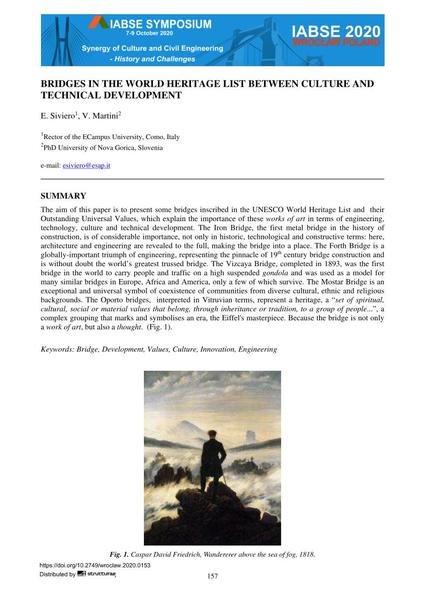|
Abstrakt:
|
The aim of this paper is to present some bridges inscribed in the UNESCO World Heritage List and their Outstanding Universal Values, which explain the importance of these works of art in terms of engineering, technology, culture and technical development. The Iron Bridge, the first metal bridge in the history of construction, is of considerable importance, not only in historic, technological and constructive terms: here, architecture and engineering are revealed to the full, making the bridge into a place. The Forth Bridge is a globally-important triumph of engineering, representing the pinnacle of 19th century bridge construction and is without doubt the world’s greatest trussed bridge. The Vizcaya Bridge, completed in 1893, was the first bridge in the world to carry people and traffic on a high suspended gondola and was used as a model for many similar bridges in Europe, Africa and America, only a few of which survive. The Mostar Bridge is an exceptional and universal symbol of coexistence of communities from diverse cultural, ethnic and religious backgrounds. The Oporto bridges, interpreted in Vitruvian terms, represent a heritage, a “set of spiritual, cultural, social or material values that belong, through inheritance or tradition, to a group of people…”, a complex grouping that marks and symbolises an era, the Eiffel's masterpiece. Because the bridge is not only a work of art, but also a thought.
|

